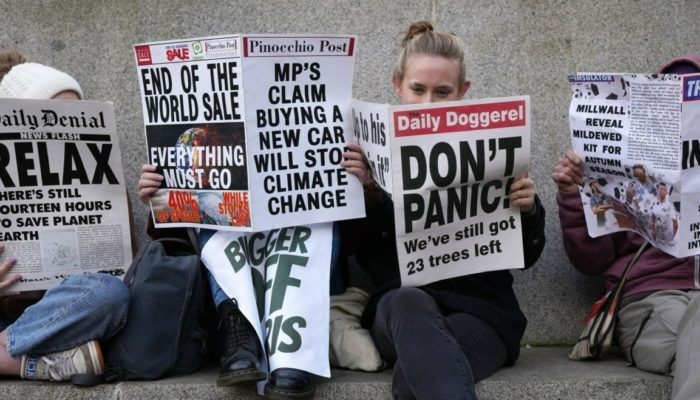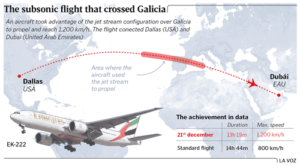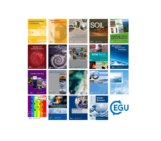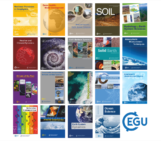
Climate change is not a new phenomenon. Nor is global warming. So why do researchers report a poor public understanding of this subject around the world? According to a recently published study, 70% of the people surveyed said they were concerned about rising global temperatures but had little knowledge about the climate crisis. When asked how much they knew about the origin and effects of global warming, a whopping 43% admitted they knew only “little.”
This imbalance between public awareness and knowledge of climate change inspired researchers to design a unique experiment, and the results tell us an interesting story! The study, published in the European Geosciences Union (EGU) Journal Geoscience Communication, was conducted in two parts: first, it examined the current state of climate change literacy and the information sources consumed by the public, and second, it introduced an impactful communication format to share scientific news with the public.
This new form of communication, researchers say, can effectively contextualize each piece of news for non-specialist audiences, make the invisible become visible, connect different parts of the world, and, above all, convey the transformational power of climate. Read on for the main takeaways from the study.
Doomsday messaging does not improve climate literacy
Although the world seems to have understood that human activity produces global warming and that such actions have serious implications for biodiversity, researchers say this just a shallow understanding, and, in fact, people remain unaware of how the greenhouse effect works or how each extra 1∘C impacts the planet.
Despite scientists and policymakers changing their terminology to describe global warming – emphasizing with words like “climate crisis” and “climate emergency,” most of the population remains unfamiliar with these technicalities. Researchers say that even with regular climate change communication, “the effect vanishes soon after” and does not lead to changed public behaviour. So the problem we face today is clear: our current doomsday messaging isn’t doing much to convince people of the severity of the crisis.
People rely on the media (not scientists) for climate information
Interestingly, when the study participants were asked from where they obtained information on climate change, the majority (42%) said it was from a journalist – nearly twice the number that replied “from a lecturer” and thrice the number that answered “from a scientist.”
These findings led the researchers to propose a new format for climate change communication: reading a daily section of a newspaper. They believe this route may have a different impact and a longer-lasting imprint as it supports gradual, long-term learning in people. According to the researchers,
“Scientific dissemination requires analysis, depth, context and perseverance, so that the public can piece together each part of the complex puzzle that forms the Earth’s climate while also understanding the role played by each piece.”
This is also in line with current discussions which highlight the need to design an educational strategy supported by ‘a social experience’ to improve scientific literacy.
The Weather Stories format: an effective tool for climate change literacy
Historias del Tiempo – the Weather Stories format – is a pun in Spanish that plays on the words ‘time’ and ‘weather’ as well as ‘stories’ and ‘histories.’ It is published in La Voz de Galicia, the third most read newspaper in Spain. For over ten years, a team of researchers have been maintaining this format with the purpose of sharing information on the weather, climate and climate change from a scientific point of view.
At first, the newspaper format may seem all too simple; a daily column isn’t exactly groundbreaking. But for a whole decade, this column has served as an effective means of communicating scientific news, particularly on climate change. And there are 5 key reasons that lead to its continued success:
- Daily content: a dedicated space for readers provides the opportunity to learn about the weather, climate and climate change, regardless of the newspaper’s informational demands at any given time
- Sustained scientific dissemination: as the coverage of a certain climate event begins long before its actual impact and continues for days after it has passed, researchers use this extended period to provide context and broader knowledge of the issue to the readers
- Historic perspective: this is the format’s hallmark, as it helps readers understand the relevance of climate in the evolution of life on Earth and see that this influence can sometimes change. Also, the historic perspective frames broader concepts in a locally relevant context for the public
- Atmospheric connection: given that the atmosphere is a gas layer that knows no boundaries, the Weather Stories column highlights atmospheric phenomena that occur thousands of kilometres away and connects them to local regions that impact the reader
- Specialised communication: various regional, national and international institutions that specialise in meteorology, climatology and climate change collaborate on this daily section. This allows the section to provide thorough content on topical environmental issues through expert communicators
The researchers cite the example of the jet stream, which as a complex scientific concept was explained to readers over the course of multiple columns in the newspaper. During its years of publication, the daily format of Weather Stories has released hundreds of articles about the jet stream, helping to reveal and popularize this physical concept and highlight its relevance in the Northern Hemisphere and Spain in particular.
Weather Stories tries to impress upon its readers that:
Climate change is not only about hurricanes on the East Coast of the U.S., heat waves in Europe and droughts in Africa; it can also be linked to a war in Syria due to the 2010 – 2017 drought, which caused a mass migration of farming families to urban centers.
In closing, the study’s authors argue that climate change must be approached from a dissemination point of view and not merely from an informational one. This is a necessary step that mass media must take to help the audience comprehend the nature of such an existential issue as global warming. The researchers hope their newspaper column model will serve as a guide for other countries, and that the media is considered a valuable resource to improve climate change literacy. By combining education and information, they say it may just be possible to face the enormous challenge of understanding (and then tackling) climate change in the years to come.





